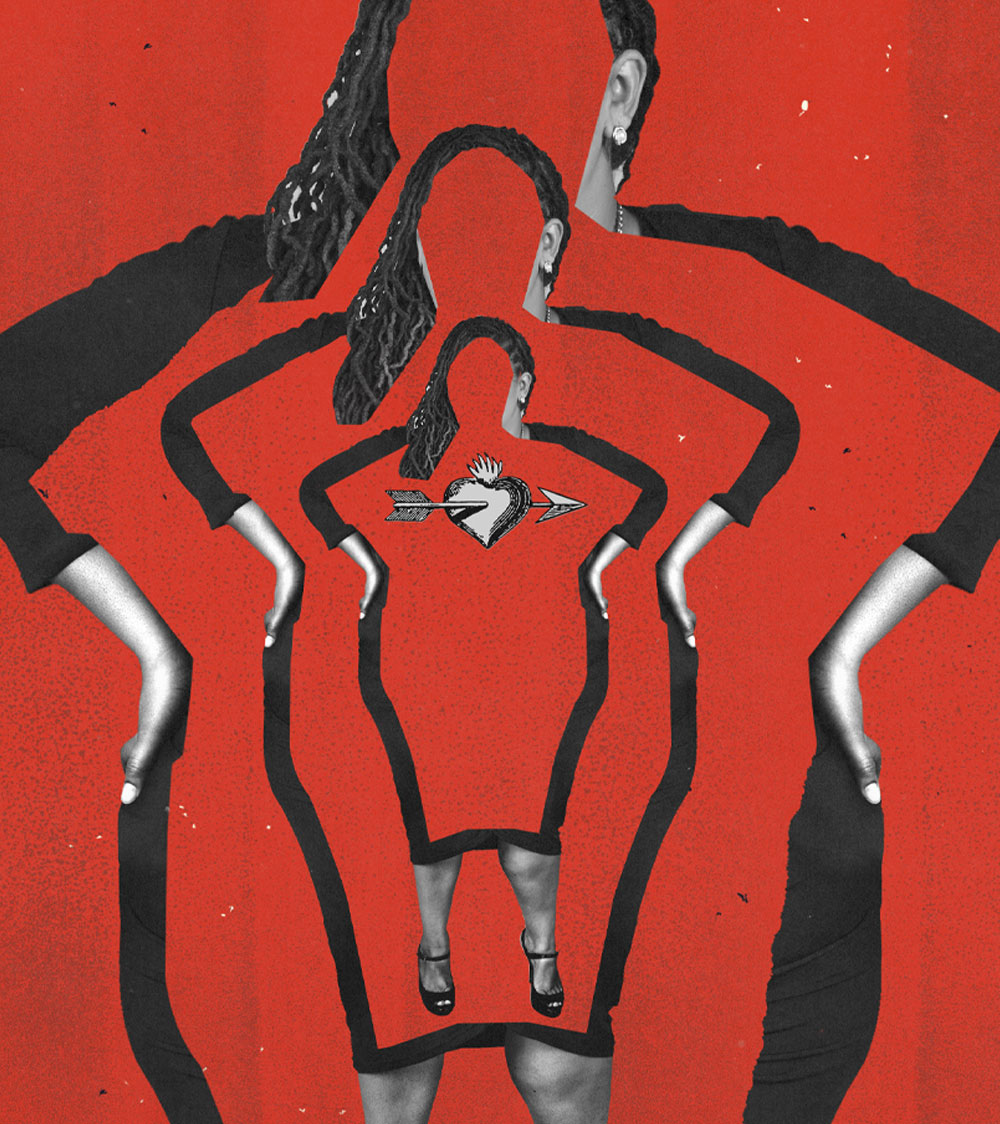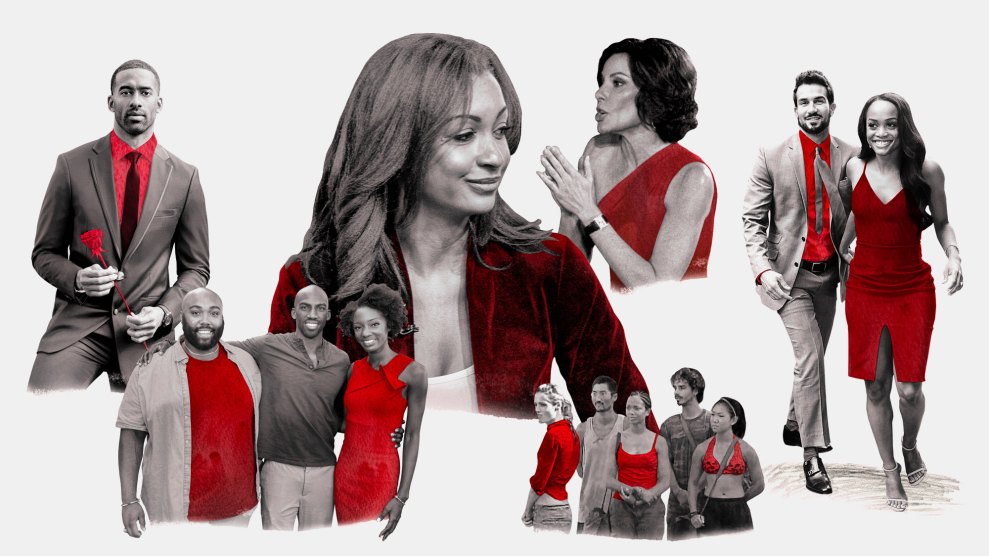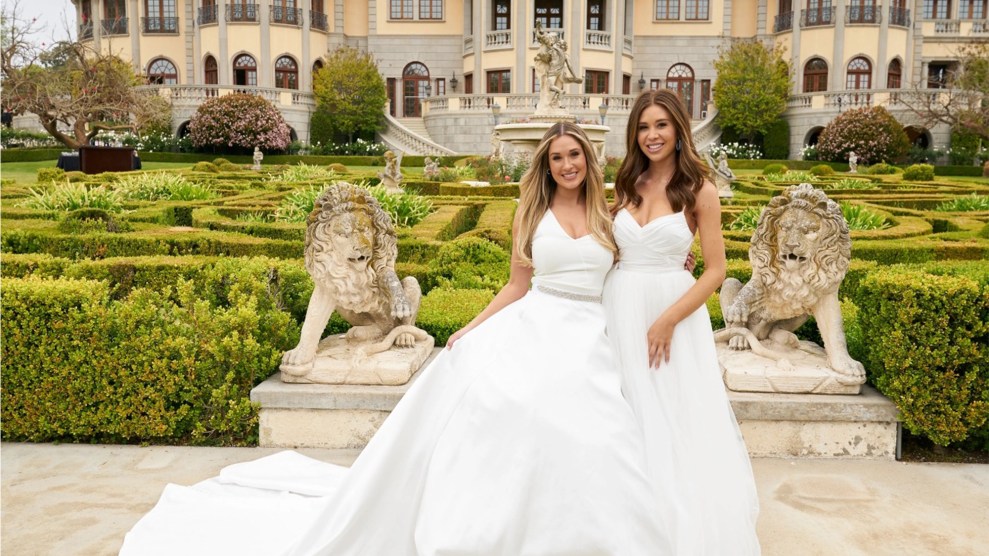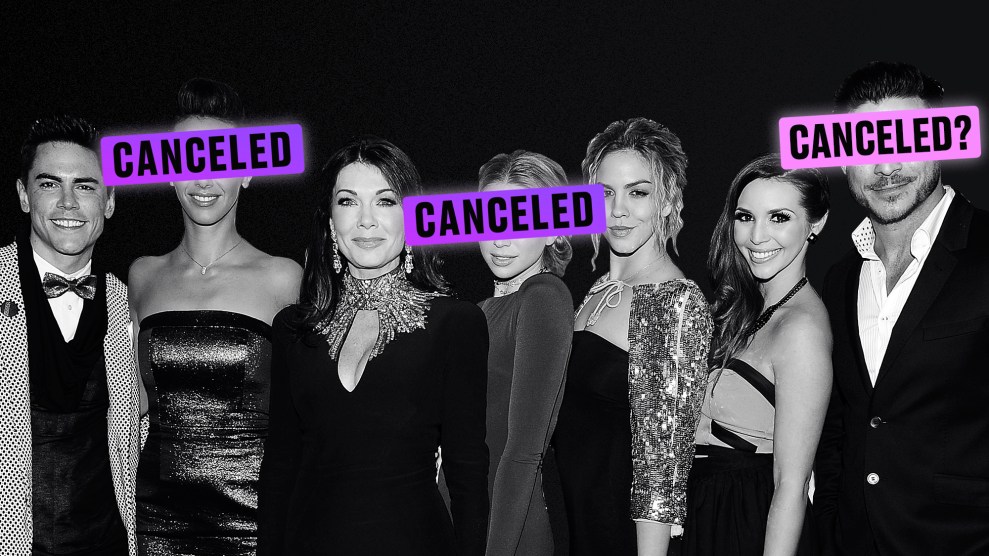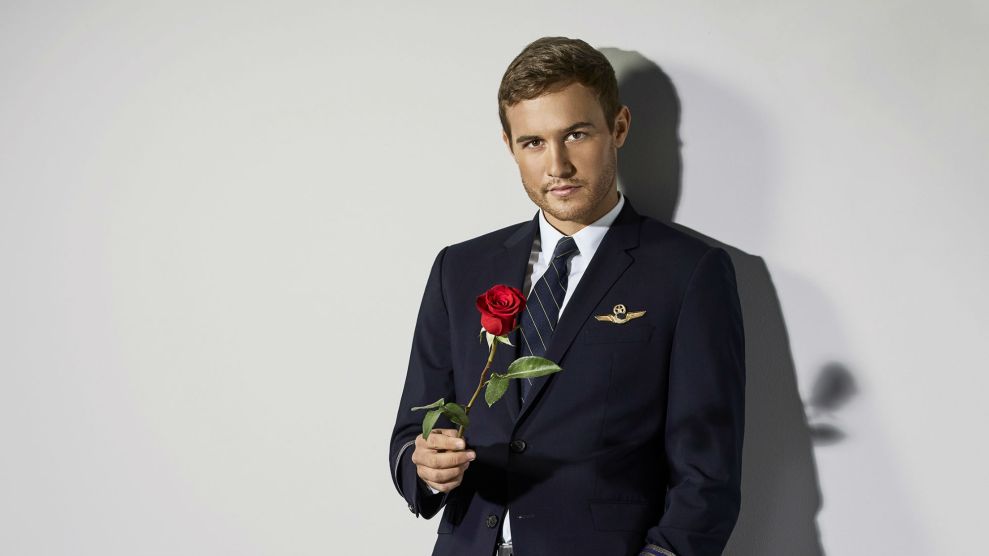Netflix’s dating experiment Love Is Blind went viral at the same time Covid did, debuting the day before Valentine’s Day in 2020. The show’s (heteronormative) premise encamps men separately from women, permitting them to talk with one another solely via what are known as “pods”: individual, private windowless cubicles wired so that pairs can get to know each other through a thin wall. Contestants propose to each other within 10 days, and those who don’t make a connection are eliminated. Once engaged, couples finally get a first glimpse of each other just before they’re whisked away to a group retreat.
At least 30 million households tuned in by April 2020, making this the first time since the onset of the streaming era I could remember feeling like everyone I knew was watching the same thing, at the same time. Two years later, with season 3 approaching on October 19, and two more already greenlighted, Love Is Blind continues its pursuit of partnering singles by eliminating all the surface stuff so they can focus on the depths of a person—in theory anyway. As contestant Chassidy said at the start of season 2: “My physical insecurities have definitely affected my dating life. This experiment allows me to be judged for who I am as a person, vs. the physical.”
And while season 1 mostly focused on thin white couples, season 2’s cast rollout on Instagram looked different: There were people of all races and sizes. It felt like the producers nailed it this time.
Chassidy, a Black 34-year-old entrepreneur from Chicago, wasn’t having much luck dating and had become interested in the concept of arranged marriage, so she decided to give Love Is Blind a go. “I was just in a place like, ‘Well you know what? I ain’t doing it right obviously—this may work,’” she told me over Zoom. “I didn’t have anything to lose.” She spent 10 days in the pods whittling down a roster of potential suitors. But in the produced and packaged version of the show that finally aired, Chassidy hardly got any screen time; she stopped appearing altogether by episode 2. She felt it was a bit of a bait and switch for Netflix to tout its diverse cast on its Instagram only to end up with one Black woman—out of an original four—making it out of the pods. “It’s just like, oh, okay, we’re back to square one. I do feel like they dropped the ball on that.”
The color line runs through Hollywood’s myriad dating shows. The Bachelor franchise has come under intense scrutiny for racism both within its production and among its fan base; the show started in 2002, but didn’t cast its first Black lead, Rachel Lindsay, until 2017. Today, you can see a sprinkling of Black folks on new shows like The Ultimatum, FBoy Island, and Too Hot to Handle; as cast members introduce themselves, you can imagine a producer offscreen, ticking off a box, keeping track of a quota.
There’s another layer here, too. Chassidy is a plus-size Black woman, making her one of few, if not the first, full-figured people cast on a mainstream dating show. Hope, a white, plus-size 31-year-old sales manager, also briefly appeared in season 2 in the periphery, sharing the benchmark. Her opening line on the show was expressly about her size: It “doesn’t matter what I look like, how much I weigh, color, ethnicity, anything you come from; it’s who you are inside.”
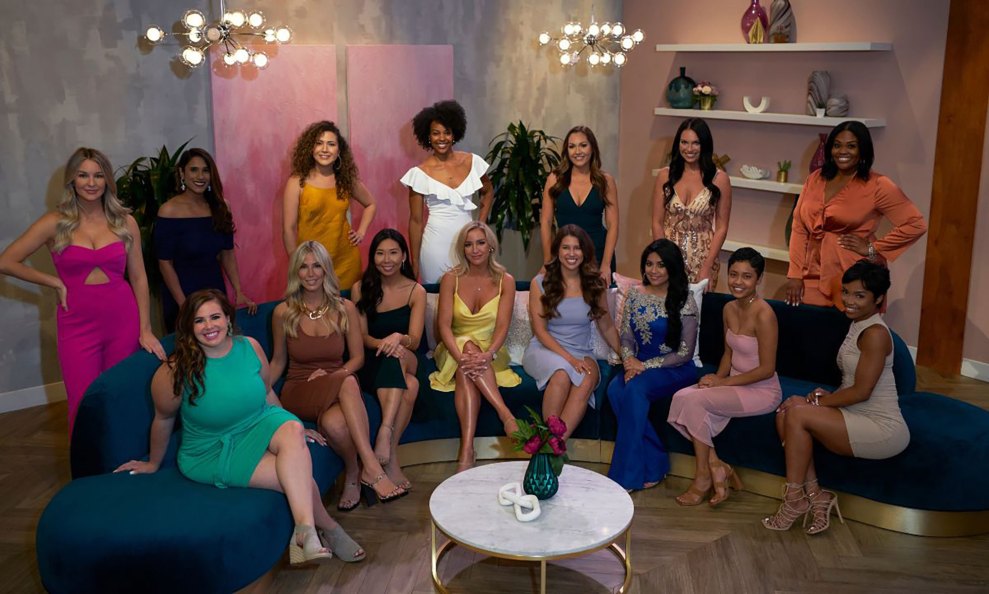
Contestants from “Love Is Blind,” Season 2. Chassidy, on the far right of the back row, says she went on the show in hopes of finding a lifelong partner, but faded from view after the second episode.
Netflix
But little of that was actually true. Chassidy and Hope both faded from the season after the first episode. I sensed that the show had paraded the women as a pathetic attempt at better optics. In July 2022, I got the confirmation I needed when actress Vanessa Lachey, who co-hosts Love Is Blind with her husband, former boyband sensation Nick Lachey, told Insider that the lack of “body diversity” on the show is in part because fat people are too self-conscious to make it out of the pods: “Their whole life they’ve been so insecure about being themselves because of this crazy swipe generation that we are in and this catfishing world that we’re in that they’re so afraid to be themselves,” she said. “I wonder if they truly don’t have enough time in those two weeks to find themselves and then be themselves to then find that spouse.”
Lachey’s comment regurgitates a tired stereotype about fat people’s perception of their bodies and treats a systemic issue as an individualized one, as theorist Da’Shaun Harrison wrote about in their debut book Belly of the Beast: The Politics of Anti-Fatness as Anti-Blackness. Chassidy clarified to me that she felt good about how she presented herself. “What’s so sad about [Lachey’s] statement is, us plus-size women are constantly uplifting the smaller people because they’re so insecure,” she says, adding that she was constantly reassuring her pod-mates about their appearances. “Get out of the mirror, girl, you look good!”
The average American woman wears a size 16 to 18. People in bodies like Chassidy’s and mine are actually the norm. And yet, whenever anyone who looks like us appears onscreen, weight becomes the center of conversation; they can’t just be in their bodies, especially when they’re also Black. That’s why the framing of Chassidy as insecure from the outset of season 2 really bothered me. Lachey put the onus of finding a partner on people whom society denigrates. This type of thinking is not only normalized, it’s systemic: Fat people in 49 states can still lose their job just for being fat.
Love Is Blind is more of a hypocrisy than anything else, failing to make good on its promises to eliminate beauty standards. The show demonstrates how little the needle has moved since this country’s early citizens began disseminating their own racialized beauty hierarchy that bound thinness and whiteness as the apex of aesthetics.
Instead of meaningfully casting and showcasing plus-size people, Love Is Blind elevates storylines about formerly fat folks, their weight loss somehow suggesting they’re holistically ready for love. In season 1, part of Kelly’s storyline is that she’d lost a bunch of weight, gotten her life together, and become a health coach. Only in this muscular body is she ready for a serious shot at romance. In season 2, Danielle spends much of her time lashing out at her new fiance or stewing in a panic of weight insecurity. “I still always will look in the mirror and see that little fat girl,” she says to the camera.
As the season progresses, cast member Abhishek “Shake” emerges to reinforce stereotypes about what makes for a desirable woman—and the show’s producers are all too happy to allow him to monopolize the airtime. During a pod date with his future fiancee, Deepti, Shake reveals he was looking for women he could put atop his shoulders at a concert. “Will I have trouble picking you up?” he asks. Deepti is initially upset: “Shake doesn’t understand how Love Is Blind has to work,” she tells the camera. “The whole point is finding out who we are as people—not ‘Can you carry me?’’’ As Deepti later reveals to Shake, she takes this personally because she used to be heavier. Turns out they had weight loss in common. The two also relate to preferring white partners. “You like what you like, right?” Shake says.
“[Shake] got caught up into what society paints as what looks good,” Chassidy later tells me. “He thinks that’s the American Dream: to become wealthy and get a white woman.”
In centering these stories, the show’s production team props up a false correlation between weight and health, which stems from racialized tropes about fatness. In her 2019 book, Fearing the Black Body: The Racial Origins of Fat Phobia, author and University of California, Irvine, associate sociology professor Sabrina Strings unpacks how European intellectuals weaponized the female form as they gave birth to “race science.”
While working as a doctor for a Mughal emperor in India, François Bernier, a French physician and physiologist credited with being the first in the Western world to create a system of classifying people based on race, began sorting people he met based on the hue of their skin. He returned to Paris in the 1670s, just as France was entering the slave trade, and as white intellectuals in salons were debating whether some people might be destined for enslavement. Bernier, who was cozy with French elites and nobles, came up with an answer in the form of a three-page manifesto called “A New Division of the Earth.” Several of Bernier’s successors would take his work a step further and include body size as a racial distinction that justified Black subjugation: Fatness meant laziness, and slavery helped put a lazy class of people to work.
Nearly half of Bernier’s brief manifesto focuses on “female charms,” as Strings put it. The foundation of “race-making” not only created a racial hierarchy based on women’s physiology; it also left the door open for racial superiority to be determined by appearance, and more explicitly, “beautiful women.” Take Saartjie “Sarah” Baartman, the Black woman from the Cape Colony who was paraded throughout Europe in the early 1800s for men to ogle, touch, and even sexually assault. Billed as the “Hottentot Venus”—making use of a Dutch slur—her curvy physique was exaggerated and touted as “simultaneously grotesque and exotic” at ethnic freak shows, at which white people gawked at her butt, hips, and knees, and scientists asked to study her genitals. Her remains appeared in a Parisian museum until the 1970s. As Strings argues, putting Baartman on display “also helped make fatness an intrinsically Black, and implicitly off-putting, form of feminine embodiment in the European scientific and popular imagination.”
The young United States, focused on proving the merits of its national experiment, sought ways to forge an independent racial identity. Its early citizens took what Strings coined as the blooming “ascetic aesthetic” in Europe even further, helping to cement white women’s beauty standard at the expense of Black women. In 1852, Godey’s Lady’s Book, a popular women’s magazine, eventually devised an ideal that persists today: the American Beauty, a tall, slender, Anglo-Saxon Protestant woman known for her discipline and restraint. An 1877 Harper’s Bazaar piece refers to “New-World slenderness” as preferential to “Old-World stoutness.” As Strings identifies, advocating for thin bodies did not begin as a principle of health, but rather was “used to craft and legitimate race, sex, and class hierarchies.” Another Harper’s Bazaar article from 1896 stated that only “African savages” should carry stoutness, corpulence, and surplusage.
This American Beauty, the one that still attracts men like Shake, would be slender but round in the right places and—“not likely to become gross and obese, as so many of their European sisters,” reads a Harper’s Bazaar essay from 1877. Women’s magazines chiseled the ideal that is familiar today. “The Sorrows of the Fat,” an article that appeared in Harper’s Bazaar in 1897, called fatness “a most undesirable state. It is dangerous to the vital organs, and it is destructive of vanity.”
White beauty standards rely on both a centering of thin white women and a subjugation of Black women, efforts so impactful that we’ve lost track of their harmful origins. It’s why conversations about representation and inclusivity need to address interdependent systems of discrimination that exist in our world, like anti-fatness and anti-Blackness, which are often indelibly intertwined. “The image of fat black women as ‘savage’ and ‘barbarous’ in art, philosophy, and science, and as ‘diseased’ in medicine,” Strings writes, “has been used to both degrade black women and discipline white women.”
It can be easy to dismiss a reality show like Love Is Blind. But with millions of people watching, it wields power whether we admit it or not. Some things are so embedded and normalized in our culture they can be difficult to detect. It’s how I could binge Love Is Blind in 2020 but not recognize the anti-fatness therein, even as a fat person. But for those who’ve had a “fat politic” for much longer, the show has always stood as a clear example of ableism and erasure.
Harrison, who is fat, Black, and trans, at first enjoyed Love Is Blind because of its trashy appeal—it came as a welcome respite from writing. But they noticed something was off right away: “There are no fat people here,” they tell me.
That came sharply into focus during the Big Reveal. After couples get engaged in the pods, they meet in person for the first time. Each partner dons formal wear, and waits behind opaque sliding doors, like racehorses, until production switches on a light, revealing their silhouettes. Then the doors open, and the partners run to each other, mouths agape as they embrace in the middle of a red carpet between each of their starting gates. “It was just so clear that they were just relieved that this person was not fat,” Harrison suspects. “It didn’t matter what else was really happening on the other side of that window or whatever. It just mattered that they weren’t fat.”
Not being fat lends these lovers more “desire capital,” a concept Harrison explores in Belly of the Beast. Ugliness with a capital U, as they specify, is not subjective but rather “predicated on anti-Blackness, anti-fatness, anti-disfiguredness, cisheterosexism, and ableism.” A show like Love Is Blind, which pretends to set all of these factors aside but platforms people with the most desire capital anyway, makes a mockery of systemic harm. Because desirability is not just about sexual attraction—it’s also about being able to find a good job, secure housing, and good medical care, and being believed when you’re assaulted, all of which fat people are disproportionately denied.
Ultimately, Harrison tapped out of the franchise after season 1, because the damage was clear. “If love is something that can/must/does exclude fat people, particularly fat Black people, that love itself is violent,” they tell me.
Maybe we should’ve never expected a show rooted in an ableist adage to get it right. What is true is that many of us who hold multiple marginalized identities feel shut out from both the real-life dating pool and in shows about finding love. Not to mention that if a television show really wanted to revolutionize the way people find love, and play the representation Olympics, it would also include more queer people. When we only ever see able-bodied, thin, cis-hetero people falling in love, or at least getting to play the game, viewers don’t ever learn from folks who are forging romantic connections in the face of adversity.
Chassidy doesn’t think her size has anything to do with why neither she nor Hope made it out of the pods—“I don’t think it was a weight thing.” Still, she isn’t sure whether she’ll watch the next season. When we talked, she reflected on a takeaway Netflix would be smart to heed as it barrels into future seasons of the show: “I would just like to see more reality.”
